Steven Spielberg’s 1975 shark adventure may have been a troubled production, but “Jaws” left an indelible mark on horror history.
Jaws took a huge bite out of horror history.
Carving his niche with his razor-sharp teeth, Bruce the Shark (named after director Steven Spielberg’s lawyer), took his place alongside iconic movie monsters such as King Kong, Godzilla, and the Creature from the Black Lagoon’s Gill-Man. As Bruce exploded into bits at the end of the film, he would make waves that would ebb and flow for decades in the horror genre.
Jaws influenced many feature films as well as independent movies, from Deep Blue Sea (1999) to the campy Sharknado franchise. There’s even a Christmas shark movie, Santa Jaws (2018). Just take a look at the line-up on the SyFy Channel during the summer and you’ll see tons of shark movies.
Jaws also successfully crossed different genres, which is why it has such widespread appeal. It’s part action/adventure, buddy flick, monster movie, and… it is also part slasher movie, with the killer being a shark instead of a human. There are also some shots from the shark’s perspective, which is a style seen in slasher movies.
Jaws plays with the fear of the unknown — and not by design.
Countless times over the years and in many documentaries, a mechanical malfunction is credited with making a monster movie masterpiece.
Bruce didn’t work the way he was supposed to; therefore, he’s not in many scenes.
We also must not forget the iconic score, composed by John Williams. We know what’s going to happen as the music starts. We know it’s going to be bloody. The shark seems to function at just the right parts of the movie, lunging up toward the movie’s protagonists, and displaying rows of razor-sharp teeth. Who can forget Quint’s (Robert Shaw) unfortunate demise near the end of the movie?
But the shark isn’t the only highlight of the film. We can’t overlook the chemistry between the main characters, an unlikely trio who join forces to hunt the shark: Chief Martin Brody (Roy Scheider), marine biologist Matt Hooper (Richard Dreyfuss), and snarky local sea captain, World War II veteran, and survivor of the U.S.S. Indianapolis, Quint.
The three don’t get off to the best start. Friction instantly ignites between Hooper, whose interest in sharks is purely scientific, and old-school sailor Quint, who dismisses Hooper as a wealthy college boy who’s been “counting money his whole life.”
Brody suffers from an extreme fear of water, even though, as Hopper points out, he lives on an island. Brody is so determined to catch the shark that he’s willing to push his phobia aside and actually get on Quint’s boat, The Orca.
We have a veteran sailor, a marine biologist, and a hydrophobic chief of police set sail in pursuit of a shark that’s been terrorizing the beach resort town of Amity Island.
We know it’s going to be rough sailing. But, somehow, all three manage to pull it together, each adding their own expertise.
Quint has hunted sharks before, but eventually, he allows Hooper his scientific input, and Brody even pitches in while wearing a life preserver most of the time.
The most unforgettable scene is where the three bond over a bottle of booze and start telling their stories. Quint tells them the story of the U.S.S. Indianapolis and how he and his fellow crew members were terrorized by sharks. He saw many of his friends maimed and eaten.
In the end, it’s just Hooper and Brody paddling their way back to shore. Yes, Brody is in the water, and the movie ends with him saying that he used to hate the water, but now he couldn’t imagine why.
The film was based on a book of the same name written by Peter Benchley. Producers Richard D. Zanuck and David Brown reportedly loved the story and had a check made out for Benchley for $175,000 before the book was even published.
Jaws was shot on Martha’s Vineyard from May to October 1974.
The making of Jaws sounds just as dramatic as the movie itself.
Before Steven Spielberg, two different directors were approached for Jaws.
First, they approached John Sturges, who directed a 1958 adaptation of Ernest Hemingway’s The Old Man and The Sea. However, when he didn’t work out, he was replaced by Dick Richards. Producers got tired of Richards constantly referring to the shark as a whale, so they fired him.
Before Jaws, 27-year-old Steven Spielberg directed two feature films, Duel and The Sugarland Express. He really didn’t want to direct Jaws and regretted signing the contract shortly before filming was set to begin. However, it was too late to back out. Reportedly, Spielberg wanted something more serious to work on than a shark adventure movie. He didn’t want to be known as the “truck and shark director,” in reference to Duel, which is about a psychotic truck driver.
The producers bought the rights to Jaws without a thought as to how they were going to go about making the movie. They didn’t even stop to think about where they were going to get a shark.
Their first solution was to train a Great White shark. According to Screen Rant, they actually tried this. Needless to say, it didn’t work, which meant that the producers had to spend money on making an expensive mechanical shark. What the producers didn’t foresee was that the salt water would corrode the shark’s pneumatic hoses and get tangled up in seaweed. Not only that, the neoprene foam that the mechanical sharks were made of swelled when making contact with the water.
Casting the film wasn’t without its problems either.
Two of the main characters, Hooper and Quint, weren’t cast until about one week before the shooting began.
Robert Shaw wasn’t the first actor approached about the role of Quint. Shaw reportedly hated the book, but his wife, Mary Ure, urged him to take it.
Shaw was reportedly problematic due to his heavy drinking. According to Screen Rant, when he wasn’t needed on set, Shaw went to Canada to avoid the IRS. George Lucas recommended Dreyfuss for the role after the two worked together in American Graffiti.
Shaw and Dreyfuss also did not get along. According to many sources, their on-screen verbal sparring continued off-screen.
Bickering actors aside, filming on the water was also problematic. Cameras were getting soaked with water, and people were floating into the frame during filming. Not only that, the cast and crew were often sick and, of course, suffered from sunburn.
Spielberg soon found he was working overtime and over budget.
What else could go wrong? The answer: quite a lot.
Spielberg didn’t like Benchley’s screenplay, and he especially didn’t like Benchley’s characters.
Many writers were approached, but no one wanted the job of cleaning up Benchley’s script. He finally found a willing writer in Carl Gottlieb, who’s credited as co-authoring the screenplay. However, Gottlieb actually ended up re-writing most of it with input from some other writers, including Dirty Harry’s John Milius.
Gottlieb ended up doing most of his re-writes on location during principal photography. Some scenes were completed the night before they were going to shoot. At night, Gottlieb, Spielberg, and the actors in an upcoming scene would sit down to dinner together and discuss the scene. Much of what the actors brainstormed during dinner ended up in the film.
Since Jaws, the shark has since been embraced as a horror movie monster.
However, the film has had an unexpected effect in the opposite sense. Jaws has been blamed over the years for demonizing sharks. An LA Times article reports that Benchley regretted “portraying sharks as killing machines” and became a shark conservationist.
The film’s popularity may have made monsters out of sharks but eventually led to a heightened curiosity about real sharks and how they behave in their natural habitat.
While often blamed for demonizing sharks, without Jaws, Shark Week probably wouldn’t exist. Shark Week has become an annual summer tradition for some who tune in every day for documentaries that record the expeditions of real marine biologists in their pursuit of knowledge of real shark behavior.


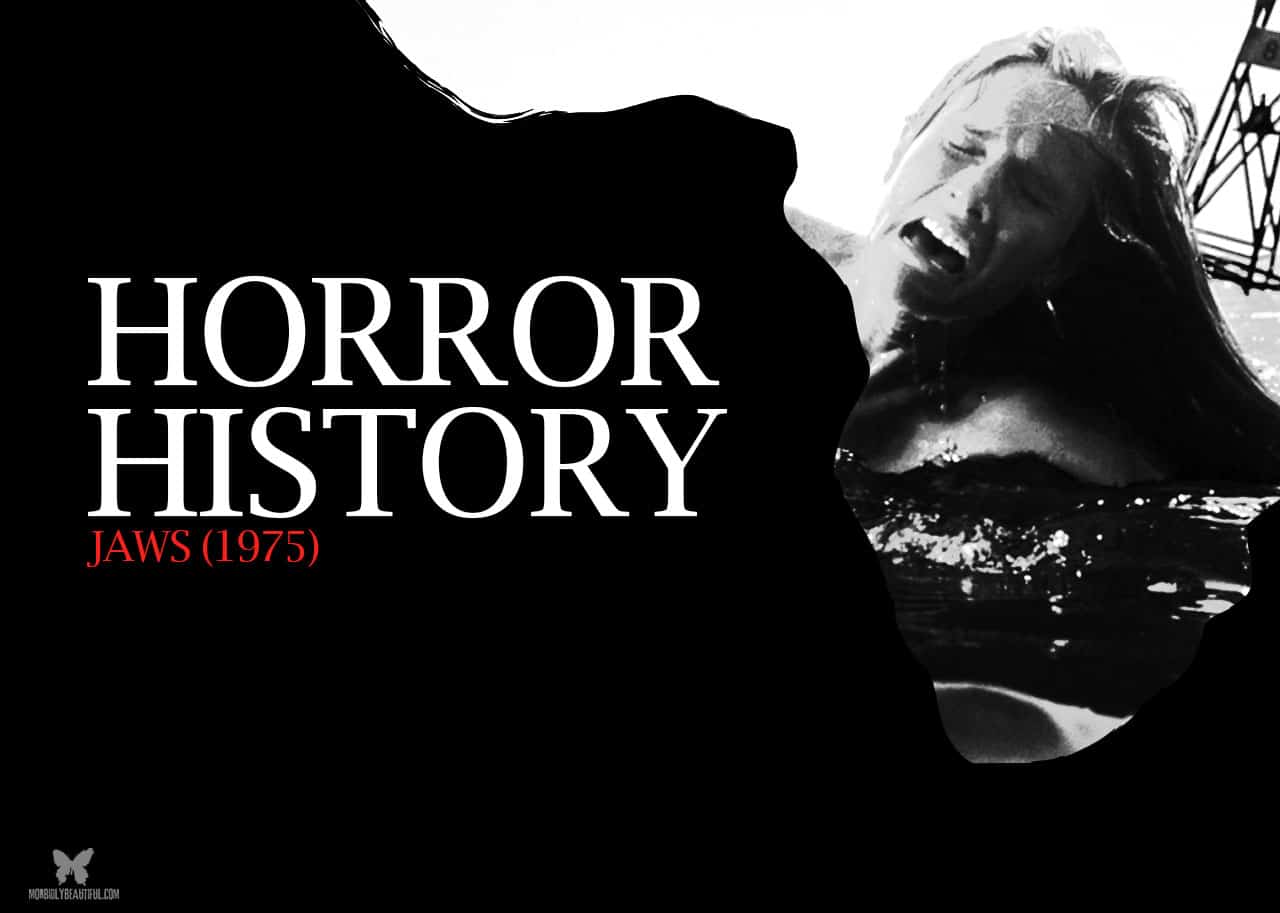
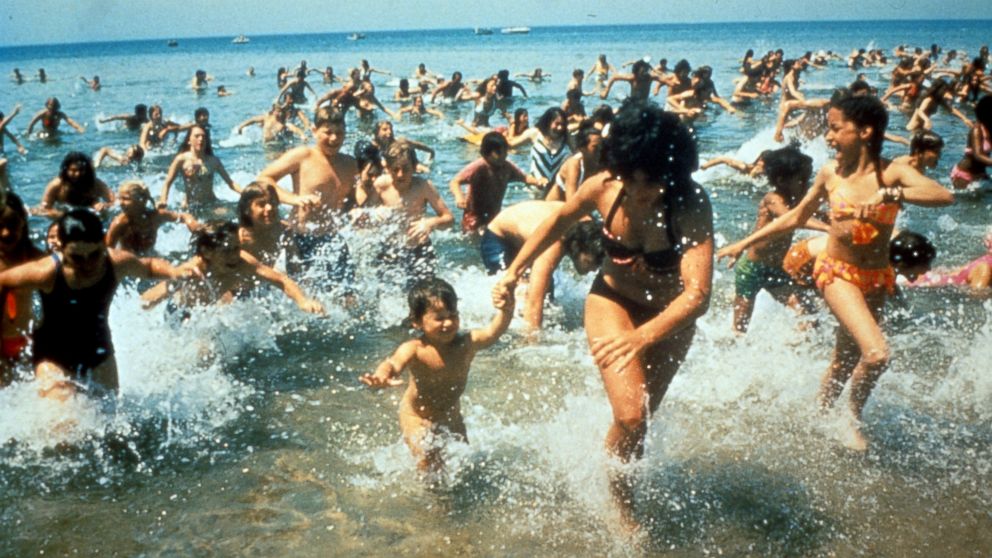
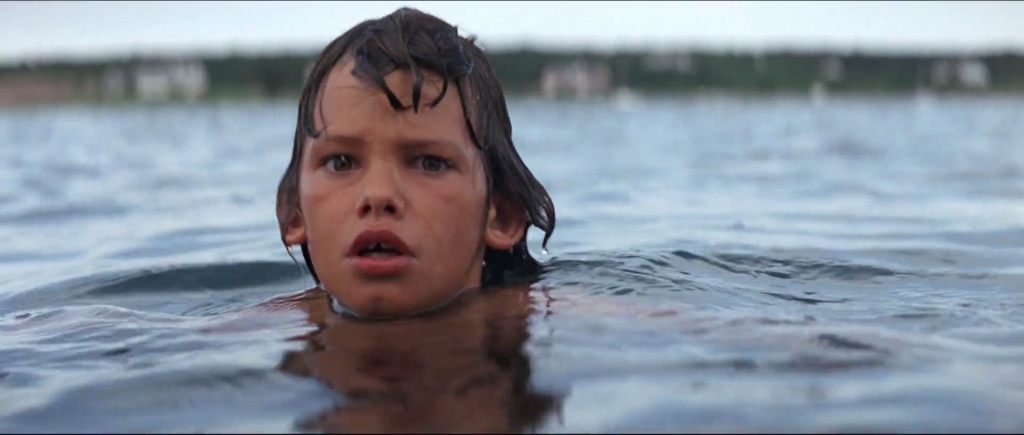
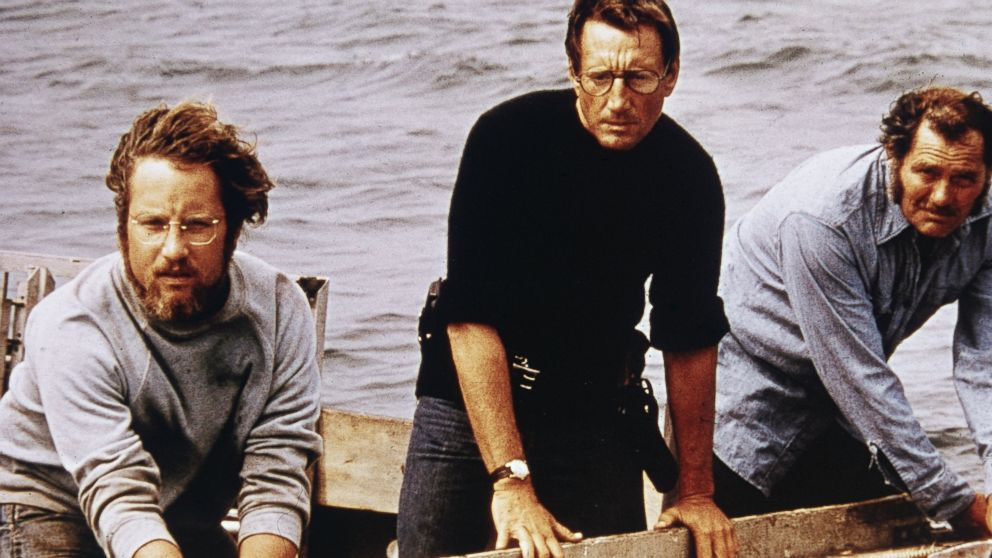
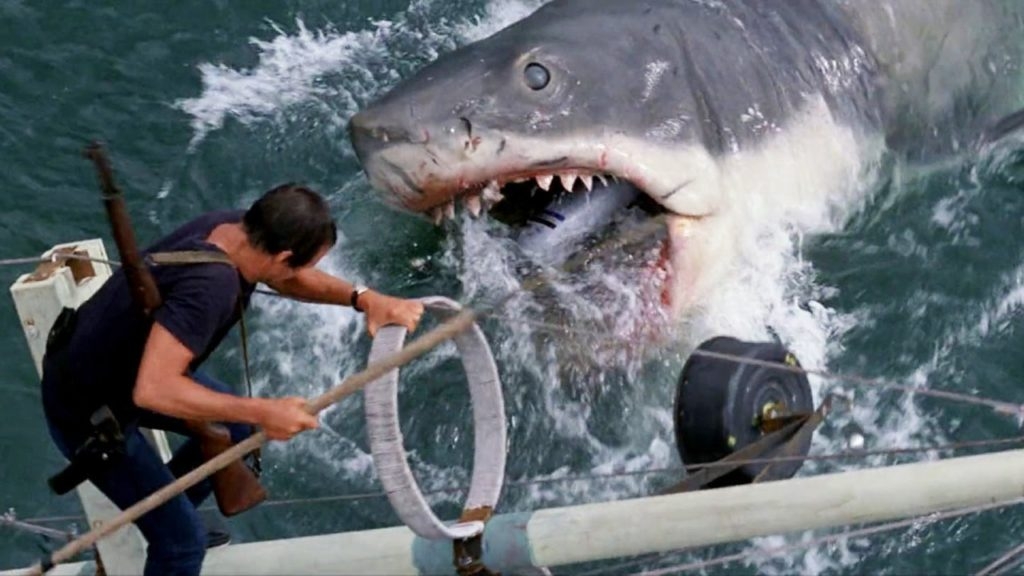
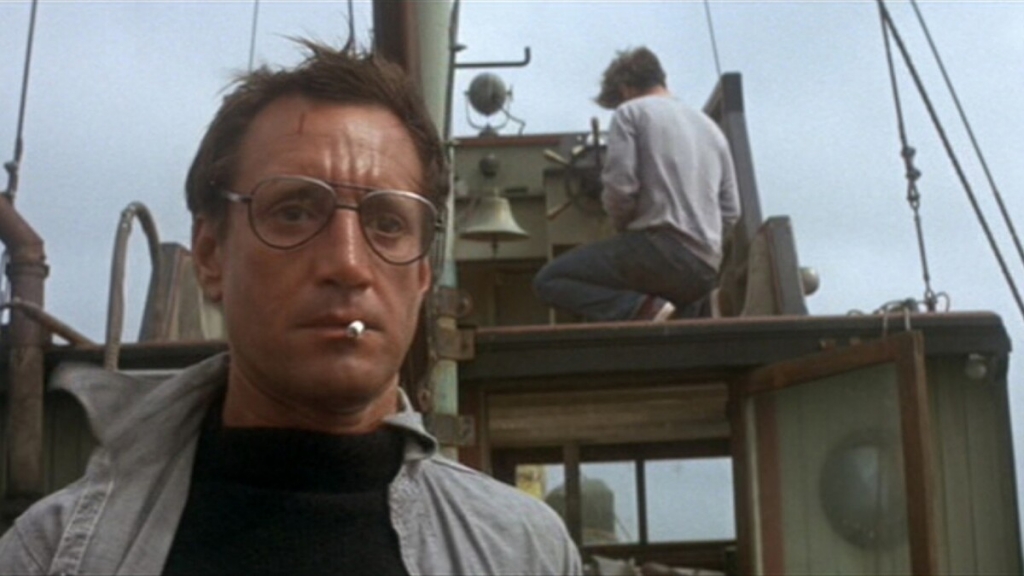
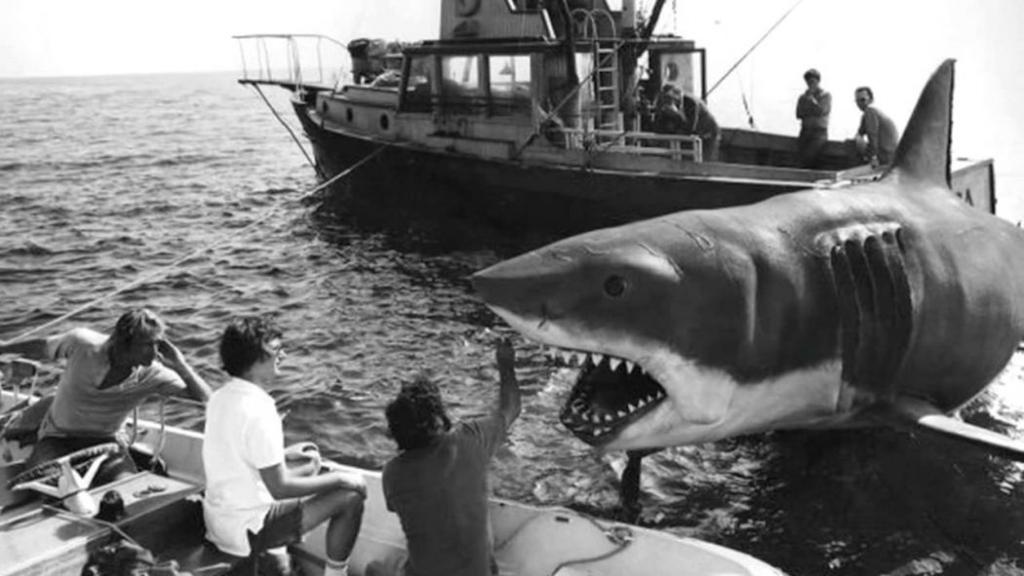
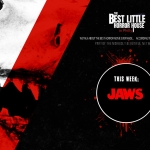

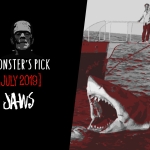









Follow Us!